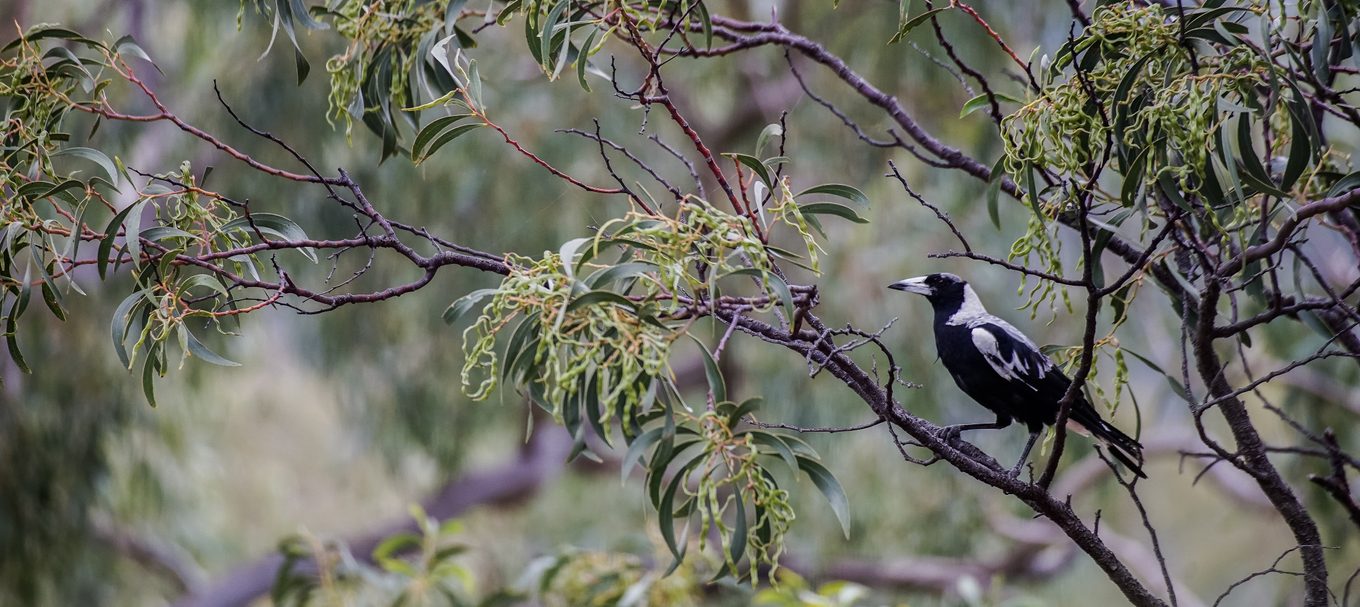
Everything you need to know about magpie swooping season
It’s magpie swooping season in South Australia. But why do magpies swoop and how can you avoid a nasty run-in? Read on.
For most of the year, outside of the breeding season, magpies live harmoniously with humans and other animals, and are a cherished addition to our gardens, reserves and national parks. However, during the nesting season from August to October, some magpies can become highly protective of their young.
Why do they swoop?
Just like us, they use body language - beak clapping, swooping and screeching – to warn other birds, animals and humans to keep away from their eggs or newly-hatched chicks.
Females will typically lay between 3 and 5 eggs and will sit on them for 3 weeks until they hatch. It is the expectant father magpie that will defend the nest from the time the eggs are laid until the young birds are fledged. Approximately 90% of male magpies won’t swoop and females typically don’t swoop at all.

While some male magpies will defend their nests against anything they consider to be a threat - from a sparrow to a dog to a human - the good news is that this should only happen for about 6 weeks.
Interesting fact: Magpies can remember many different individual human faces! They also have very long memories. So, if you’ve been swooped before, or even if you just look like someone they swooped last year, you’re likely to get the same treatment again.
So, if you have a feisty feathered friend in your neighbourhood, here are some handy tips.
How to avoid getting swooped
1 – Give magpies a wide berth
Magpies often live and nest in the same area their entire lives and tend to defend the territory within 50 to 100 metres of their nest. If you’re out and about on your bike, walking your dog or going for a jog, the best way to avoid being swooped is to change your route for the breeding season which lasts 6 to 8 weeks.
2 – Don’t run … or stop
If you are swooped on, don’t run or fight back. If you’re on a bike, get off it. Stay calm and walk quickly through the area.
3 – Protect your head
Magpies usually swoop from behind and will just clear your head. Some will strike the top of your head with their wings, beak or claws so try to protect your head and eyes by wearing a wide brimmed hat and glasses or walk with an open umbrella above your head.

4 – Walk with friends
Walk or ride in groups, as swooping birds usually only target individuals. You can also place a sign nearby to warn others or let your local council know so they can install a sign for the period.
5 – Keep your cool
Do not act aggressively. If you wave your arms about or shout, the magpies will see you as a threat to the nest. Remember, they have the ability to remember and recognise you next time, so you don't want to get in their bad books!
The magpie family
The Australian Magpie can live for 25 to 30 years and has a distinctive, cheerful warbling cry. Magpies are extremely curious and often friendly garden visitors. Dad has a white back, while mum and chick have grey backs. Generally, magpies mate for life and only search for a new partner when one dies. They spend a lot of time foraging for insects and worms on the ground, and walk one foot at a time rather than hopping.

The gardener’s friend
Magpies are beneficial to agriculture, conservation areas and gardens because they feed on pest insects. They are particularly effective at keeping snails away from your favourite roses and veggies. During winter and spring, magpies sing a short melodious version of carolling just before dawn and at sundown – one of the most delightful sounds in South Australian gardens and bushland.
Other swooping birds
It’s not just Australian magpies that swoop, although they cause the most concern. Magpie-larks, Plovers (Masked Lapwings), Grey Butcher Birds, Red Wattlebirds, and Laughing Kookaburras are also known to swoop during nesting season.

Stay in the know: Sign up to get updates from DEW, straight to your inbox!





